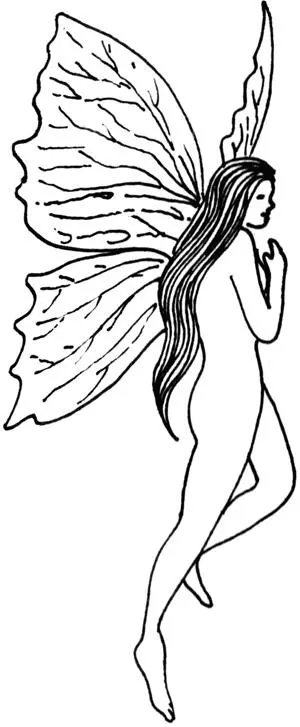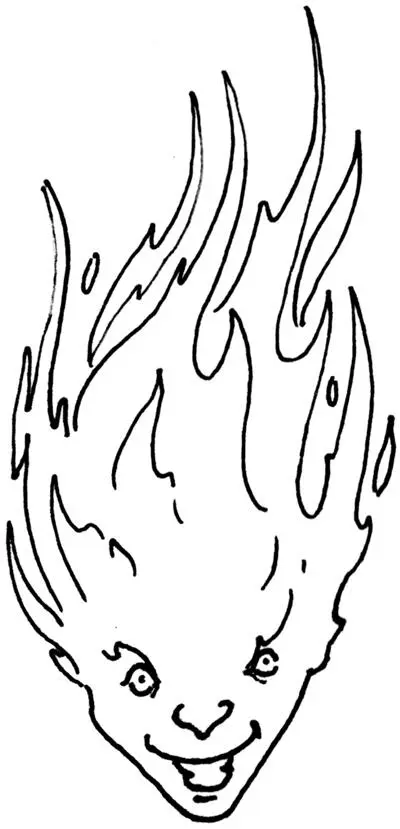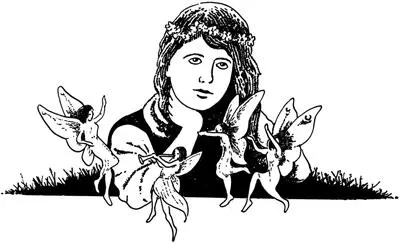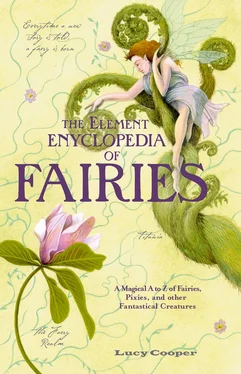Japanese fairies. A Japanese fairy tale, written down by T. Hasegawa in Chin Chin Kobakama (1903), tells the story of a lazy little girl who ate plums and hid the stones under the matting on her bedroom floor. Eventually this angered the fairies and they punished her. Every night at 2 a.m., known in Japan as the Ox Hour, the fairies rose up from the matting as tiny women dressed in bright red robes, singing:
Chin-chin Kobakama,
Yomo fuké soro,
Oshizumare, Hime-gimi!
Ya ton ton!
“We are the Chin-chin Kobakama, the hour is late, sleep, honorable noble darling!”
Though the words were kind enough, they were sung to taunt the little girl and the fairies pulled faces as they sang.
After many nights of this, the girl became tired and frightened. So, one night her mother sat up with her to see the fairies. When the little women appeared, she struck at them and they fell to the floor—as plum stones. So, the girl’s laziness and naughtiness were discovered. After that she was a very good little girl and never dropped plum stones on the floor again.

Guardian of Yorkshire nut thickets and orchards, she disapproves of laziness in humans, but takes a fairly laid-back approach to her duties, passing the time by smoking her pipe while protecting nuts and fruit from human hands. Melsh Dickcarries out the same task.
Welsh version of the word “kidnappers,” sometimes used to talk about fairies.
Lancashire bogiethat can be heard but not seen, so-called because of the sound it makes, like that of banging together cans or pots. It is one of the less frightening of the bogies.
See Nuberu, El .
Spirits of the clouds in the mythology of the Pueblo peoples of North America. According to Hopi legends, the Rain Cloud clans performed ceremonies to the Cloud People to bring rainfall. They sang songs until a mist began to form, then heavy rains fell and frightful bolts of lightning came from the sky. After this display of power, the Rain Cloud clans were invited to join the Hopi pueblo.
The Cloud People were expert basket-makers. They introduced this skill to the Hopi people and were the originators of the basket dance, which is still performed at certain ceremonies.
The Hopi continue to perform rituals at the winter solstice and in the spring to ask to the Cloud People to bring rainfall to ensure a good harvest. In these ceremonies the Cloud People are represented by kachina masks.
(Pronounced kloor-a-cawn .) Irish cellar-dwelling fairy, similar to a leprechaun. Irish folk-tale collector Thomas Crofton Crocker described him as wearing a red nightcap, a leather apron, long pale blue stockings, and shoes with silver buckles. In some tales he acts like a buttery spirit, beleaguering drunkards and frightening unscrupulous servants stealing from the wine cellar. If the victim attempts to escape the cluricaune’s taunts by moving house, the cluricaune hops into a cask and accompanies them.

(Pronounced koblernigh .) Welsh mining fairies, similar to the Cornish knockersand English blue-cap. In British Goblins (1880), Sikesdescribes them as grotesquely ugly, about 18 inches (45 centimeters) tall, and dressed like miners. They helped miners by indicating where to find good lodes of ore. In Germany, these mine spirits were known as Kobolds .
An Irish household browniewho stayed with the same family for generations. When the family relocated to America, they were sad to bid farewell to their helper. But on arriving in their new home, they were delighted to find food set out and a fire already burning brightly in the hearth, for Tom Cockle, their loyal brownie, had come with them.
A bogieman in many Spanish and Portuguese-speaking countries. The myth of El Coco is thought to have originated in Portugal and Galicia and spread to Latin American countries such as Mexico, Argentina, and Chile with Spanish and Portuguese colonization. The name “ Coco ” is related to the Portuguese and Spanish for “skull” and the bogieman is sometimes represented as a coconut or a carved pumpkin. Like a dark counterpart to a guardian angel, he is said to take the form of a dark, shadowy figure, often sitting on the roof, where he watches over a child, ready to pounce at any sign of disobedience or bad behavior and spirit them away.
A little piskyboy who was adopted by humans, as related in Robert Hunt’s Popular Romances of the West of England (1865).
Pexy or colepexy are the names of a Dorset pixy. In Dorset, an area of southern England renowned for its fossils, belemite fossils are known as colepexies’ fingers, and fossilized sea urchins are also called colepexies’ heads.
Sometimes described as a fairy horse, the colepexy haunts woods, and coppices, acting as a guardian of orchards, leading travelers astray, and occasionally luring unsuspecting folk into mounting him, whereupon he embarks on a wild ride across the Dorset downs, through thorny thickets and wetlands before bucking off his rider, leaving them stranded in a stream or ditch.
William Barnes, in Poems of Rural Life, in the Dorset Dialect (1844), describes the colepexy’s activities thus: “To beat down the few apples that may be left on the trees after the crop has been taken in; to take as it were, the fairies’ horde.”
See also Colt Pixy .
Fairy horse of Hampshire whose neighing tricks other horses and travelers into losing their way, leading them into bogs, similar to a bragor dunnie.
In Somerset, the colt pixy is an orchard guardian who chases away scrumpers (apple thieves), and may be a variant of the colepexy.
See also Lazy Lawrence .
See Korrigan .
When two girls in Bradford borrowed a camera to take photos of the fairies at the bottom of their garden, neither of them could have imagined the sensation that was about to follow. When the resulting images attracted the attention of Sir Arthur Conan Doyle, the eminent writer with a keen interest in the supernatural, the Cottingley Fairies phenomenon had everybody talking. The excitement and speculation have rippled down through the years, sparking the idea for two films released in 1977, Photographing Fairies and Fairy Tale: A True Story , and the story continues to attract interest today.

It all began when cousins Elsie Wright, aged 16, and Frances Griffiths, aged 10, got into trouble for getting wet playing in the stream at the bottom of the garden at the Wrights’ home in Cottingley. The girls loved playing in the stream, not least, they said, because they saw fairies there. When their parents laughed at the notion of fairies at the bottom of the garden, dismissing it as fanciful, or merely an excuse for splashing in the stream, the girls set out to prove the grown-ups wrong. They persuaded Elsie’s father, a hobbyist photographer, to let them borrow his camera and set off for the stream. They returned triumphantly, in great excitement.
Читать дальше















